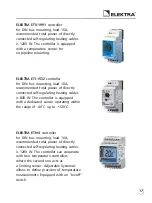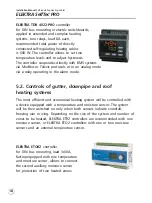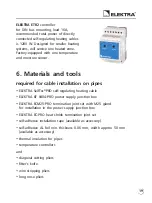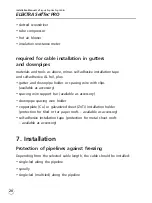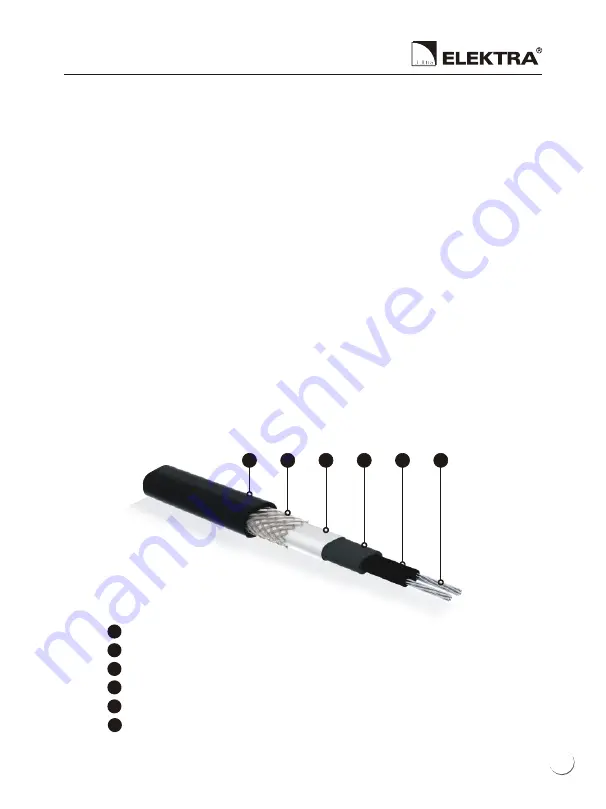
6
5
4
3
2
1
Tin-coated multi-wire copper conductor core
Self-regulating conductive polymer
Modified polyolefin insulation
PET covered AL foil shield
Tinned copper braiding shield
UV resistant halogen free outer sheath
1
2
3
4
5
6
2. Self-regulation: principle
of operation
Self-regulating cables consist of two copper cores in parallel, connected
with a core of crosslinked polymer with the addition of graphite.
The core is a self-regulating heating element with the resistance value
depending on the ambient temperature. The lower the ambient
temperature, the lower the core’s electrical resistance value and,
consequently, the higher heating power of the cable. The higher the
ambient temperature, the higher the core’s resistance and therefore
the lower the heating power of the cable.
Due to their properties, self-regulating heating cables can touch or
cross freely, with no danger of spot overheating. Another significant
advantage is the possibility to have cables cut into segments of any
required length.
Still, the max. permissible length of a heating circuit must be
observed, as estimated in table 2.
5
Construction of
®
the ELEKTRA SelfTec PRO heating cable
Summary of Contents for SelfTec PRO 10
Page 2: ......
Page 23: ...Installation of a self regulating heating cable on a valve 23 ...
Page 36: ...ESG EN 416 Grupa V5 04 16 0 1 c www elektra eu ...
Page 38: ......
Page 59: ...Układanie przewodu samoregulującego na zaworze 59 ...
Page 72: ...ESG PL 416 Grupa V5 04 16 0 1 c www elektra pl ...
Page 74: ......
Page 95: ...Монтаж саморегулирующегося кабеля на клапане 95 ...
Page 108: ...ESG RU 416 Grupa V5 06 19 0 1 b www elektra eu ...

















